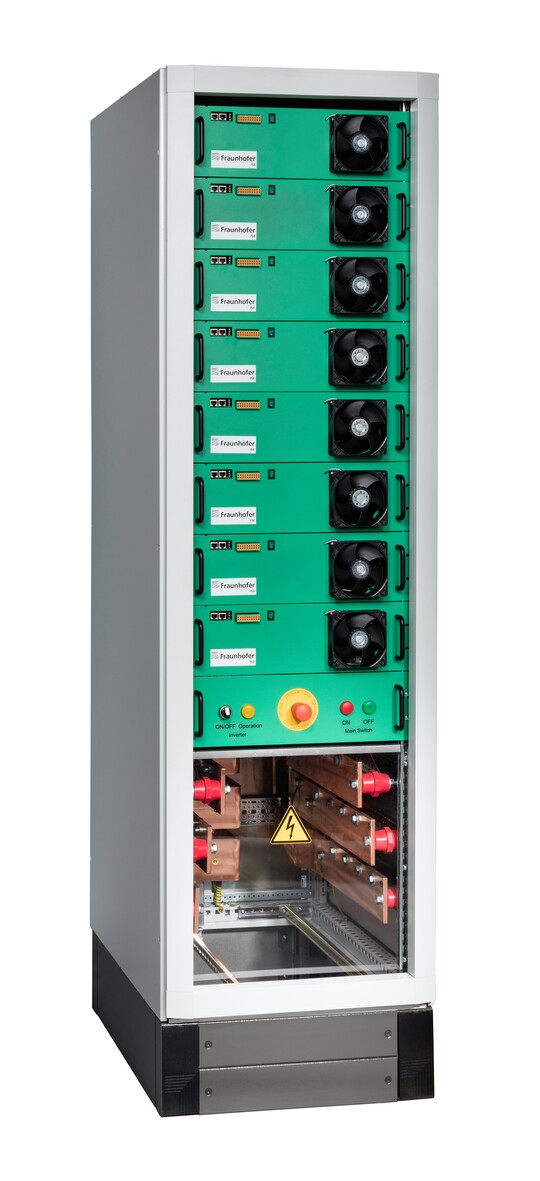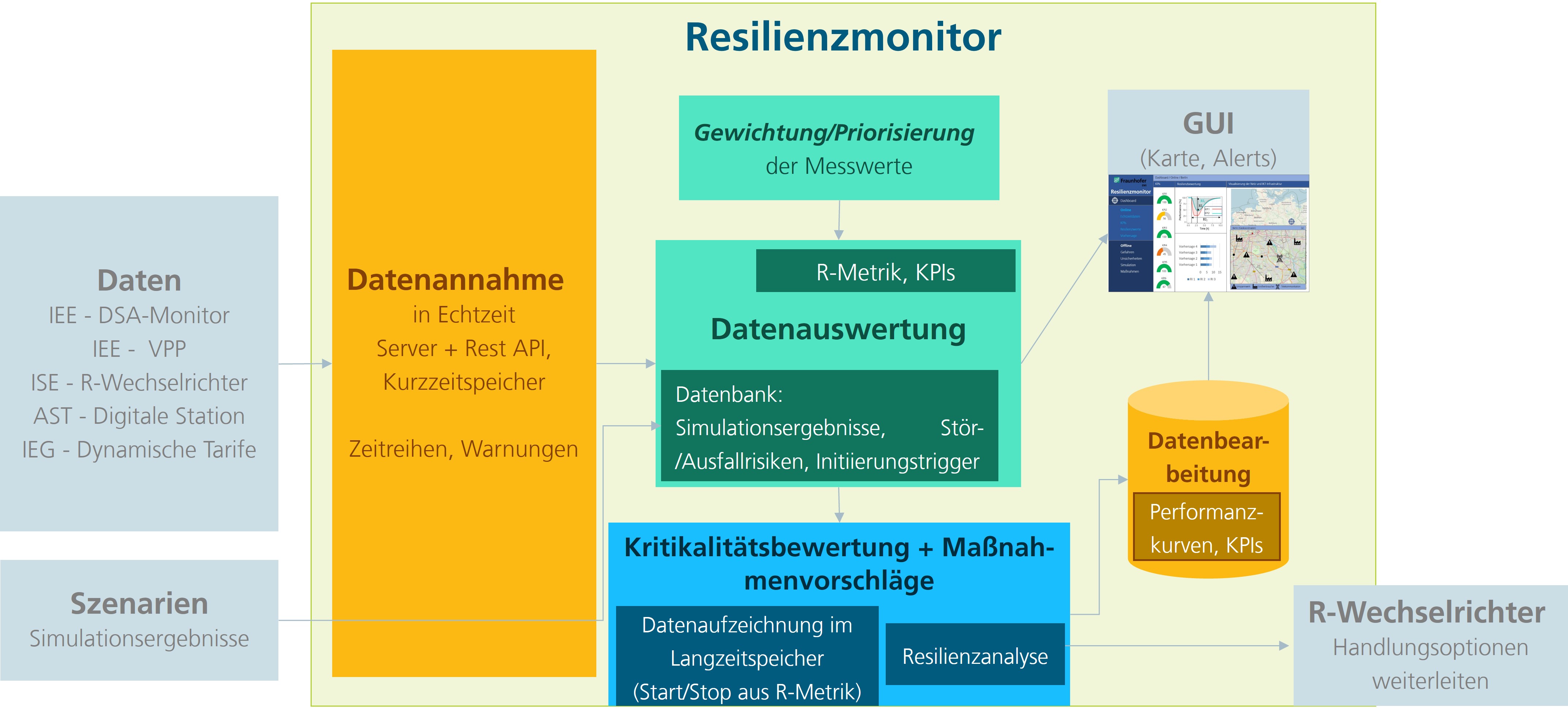| Duration: | 08/2021 - 07/2024 |
| Contracting Authority / Sponsors: |
Bundesministerium für Bildung und Forschung (BMBF) |
| Project Partners: | Fraunhofer EMI, Fraunhofer IEG, Fraunhofer IEE, Fraunhofer IOSB-AST |
| Website: | RESIST |
| Project Focus: |
RESIST – Resilient Power Grids for the Energy Transition



The project »RESIST« addresses the resilience of power grids, which is becoming increasingly critical. This is relevant due to the increase of extreme weather events as a consequence of climate change, the threat of cyberattacks and physical sabotage, but also due to the advancing decentralization and digitalization of power generation. In this context, the resilience of the power grid describes the extent to which the power supply can be maintained before, during and after a disruption.
One of the key challenges of power system stability is the increasing reduction of inertia, due to the progressive replacement of conventional power plants with system-relevant rotating masses through inverter based resources. In addition, the increasing complexity and connectivity of systems leads to vulnerabilities, to failures and disturbances and their cascading effects. Technical failure, targeted cyberattacks or increasing weather extremes can be sources of these failures.
Together with the Fraunhofer Institutes EMI, IEE, IEG and IOSB-AST, three failure scenarios (1. technical defect, 2. cyberattack, 3. natural disaster) were defined, which are modeled in different simulation environments, supported by real-time data acquisition in the laboratory. The collected data will be pooled, analyzed and visualized in a resilience monitor. In addition, a planning tool will be developed to consider the identified resilience criteria for the planning of the future grid infrastructure.
Furthermore, the use of grid-forming inverters to enhance power system resilience in the distribution grid is being investigated. These inverters can provide additional services for grid stability, such as the contribution to system inertia. Moreover, grid-forming inverters act as a voltage source and therefore enable the formation of local grid islands. For this purpose, the 1 MVA battery inverter developed in the NETfficient project will be equipped with a grid-forming control system. This will be investigated in hardware-in-the-loop (HIL) tests in the context of the Digital Grid Lab. An extra-high and medium voltage grid is modeled in the simulation environment of the real-time capable HIL computer and the resilient inverter control is implemented on the existing hardware. The resilient properties of the inverter control can be analyzed and validated by simulating various fault szenarios. A particular focus is on stable islanding of the medium-voltage grid, which is made possible by the resilient inverter.
Another aspect of the project is to make the communication and control of the grid-forming inverter as simple, robust and standard-compliant as possible. The interface for transmitting measured values and alerts, as well as control commands, will therefore use the IEC 61850 MMS protocol and be strongly oriented towards the functions of the FNN control box.